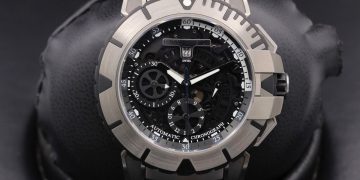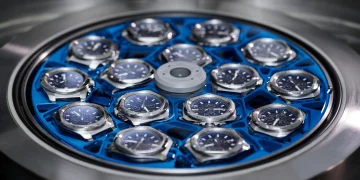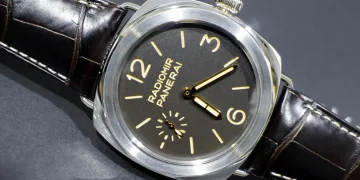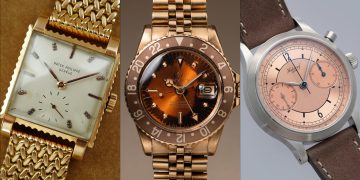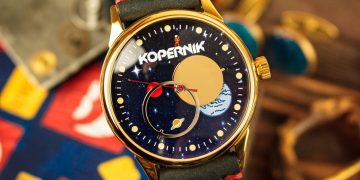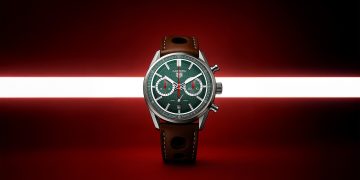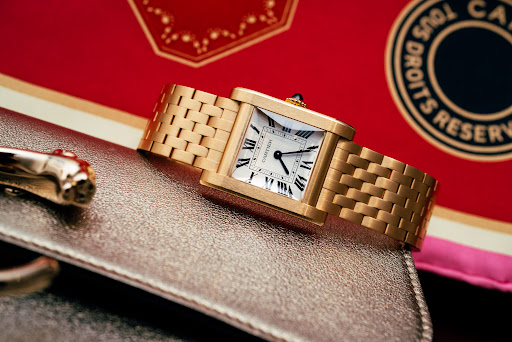Introduction
In the world of luxury watches, one of the most important factors that define a brand’s success is the relationship it builds with its customers. A key way to foster this relationship is through heritage — a brand’s history, its origins, the craftsmanship, and values that have been passed down through generations. Watch brands that can effectively tell their stories of heritage and tradition are often able to create a sense of trust, pride, and loyalty among consumers. This article will explore how the historical legacy of luxury watch brands contributes to consumer loyalty and how these companies use their past to maintain their relevance in today’s competitive market.
1. The Role of Heritage in the Watch Industry
1.1 Defining Brand Heritage
- Heritage refers to the brand’s history, the evolution of its craftsmanship, and the story behind its products.
- For watch brands, heritage often includes decades, if not centuries, of tradition, innovation, and milestones in horology.
- Consumers are drawn to the narrative of a brand’s origins, including how it was founded, how it survived challenges, and how it influenced the evolution of timekeeping.
1.2 Emotional Appeal of Heritage
- People often buy luxury watches for more than just practical reasons; they are making a statement and seeking a connection with the history that the brand represents.
- A well-defined brand heritage can make the consumer feel part of an exclusive, enduring legacy.
2. How Tradition Translates to Craftsmanship and Quality
2.1 Craftsmanship as the Backbone of Heritage
- Luxury watch brands use their heritage to showcase their deep-rooted craftsmanship. Companies that have been around for centuries, like Patek Philippe, Audemars Piguet, and Rolex, use their history to emphasize their commitment to precision, quality, and artistry.
- Skilled artisans and master watchmakers have honed techniques passed down through generations. The meticulous care put into each timepiece creates a level of respect and trust among consumers.
2.2 The Impact of Innovation within Tradition
- While heritage is grounded in tradition, top watchmakers also recognize the importance of innovation. Companies like Omega and TAG Heuer continue to build on their historic foundation by embracing cutting-edge technology while still honoring their legacy.
- Balancing tradition and innovation allows luxury watch brands to stay relevant to modern consumers while staying true to their core values and craftsmanship.
2.3 Long-Lasting Quality as a Symbol of Heritage
- Consumers tend to trust brands that have a proven track record for durability. The ability of these companies to deliver timepieces that last for generations often stems from their deep-rooted traditions of quality control and mastery.
- Brands that produce watches that withstand the test of time, both in terms of mechanical accuracy and aesthetic appeal, are able to leverage their long-lasting reputation.
3. Historical Milestones and Iconic Models That Build Consumer Loyalty
3.1 Iconic Models as Symbols of a Brand’s Legacy
- Watch brands often have iconic models that become synonymous with the brand itself, such as the Rolex Submariner, Patek Philippe Calatrava, or the Omega Speedmaster.
- These models often carry a rich history of their own, with particular milestones or achievements, such as the Speedmaster’s association with space exploration. These models’ historical significance makes them even more desirable to consumers, who feel they are purchasing a piece of history.
3.2 Historical Milestones and Their Impact on Consumer Trust
- When a watch brand has achieved important milestones — such as supplying watches to military units or sending them into space — it creates an image of reliability and prestige. These achievements, tied directly to the brand’s identity, create a sense of trust among consumers.
- For example, Rolex’s involvement in the conquest of Mount Everest or Omega’s space missions with NASA have built stories that resonate deeply with consumers.
3.3 Limited Editions and Heritage Collections
- Many watch brands introduce limited-edition releases or heritage collections to honor important events in their history. These releases allow customers to own a part of the brand’s legacy while also providing exclusivity.
- The demand for these limited-edition pieces is often fueled by the historical significance they hold, ensuring consumer loyalty.

4. The Role of Storytelling in Cultivating Consumer Loyalty
4.1 The Power of Brand Narratives
- Consumers are increasingly drawn to the stories behind the products they buy. Watch brands that can effectively communicate their history through storytelling can develop a stronger emotional connection with consumers.
- Telling a compelling story about the founder’s vision, the brand’s rise to prominence, or the challenges it faced over time helps make the watch more than just a tool for telling time — it becomes a symbol of resilience, quality, and tradition.
4.2 Social Media and Digital Storytelling
- In the modern era, luxury watch brands utilize digital storytelling through social media platforms, blogs, and videos. By showcasing the craftsmanship and rich history of their timepieces, they allow consumers to connect with the brand on a deeper level.
- Brands like Rolex and Audemars Piguet excel at using social media to share historical stories, keeping their heritage alive while appealing to a younger audience.
5. Brand Loyalty and Consumer Behavior in the Luxury Watch Market
5.1 The Impact of Heritage on Repeat Purchases
- A strong brand heritage not only attracts new customers but also plays a significant role in fostering repeat business. When customers feel a connection to a brand’s history, they are more likely to make subsequent purchases and become lifelong customers.
- Consumers often feel that owning multiple pieces from the same brand, especially limited-edition models or vintage watches, adds to their personal connection to the brand’s legacy.
5.2 Generational Loyalty
- Luxury watches are often passed down through generations. The stories and history behind these watches create a deep emotional connection, leading to generational loyalty. It’s not just about purchasing a luxury item, but about continuing a family tradition.
- Brands like Patek Philippe thrive on this idea, using slogans like “You never actually own a Patek Philippe. You merely look after it for the next generation.”
6. Challenges for Watch Brands in Maintaining Heritage
6.1 The Modernization Dilemma
- While heritage is important, it’s also crucial for watch brands to modernize and stay relevant to today’s consumer. Brands that are too stuck in the past risk losing their appeal to younger buyers.
- Finding the balance between honoring tradition and embracing modern technology is key to maintaining brand loyalty.
6.2 Globalization and Shifting Consumer Preferences
- With global access to a variety of brands and products, consumers are increasingly looking for new ways to define luxury and exclusivity. The younger generation, in particular, is more inclined to question traditional luxury values.
- Watch brands need to adapt their heritage narratives to resonate with a global and diverse customer base, blending tradition with a fresh approach.
7. Conclusion: The Enduring Power of Heritage in the Watch Industry
Watch brands that successfully combine history with craftsmanship create more than just products; they build lasting relationships with consumers. The strength of a brand’s heritage lies in its ability to communicate its legacy and values, creating an emotional bond with consumers who value tradition, quality, and timelessness. By maintaining their focus on heritage while embracing modern innovations, these brands will continue to inspire consumer loyalty for years to come.



